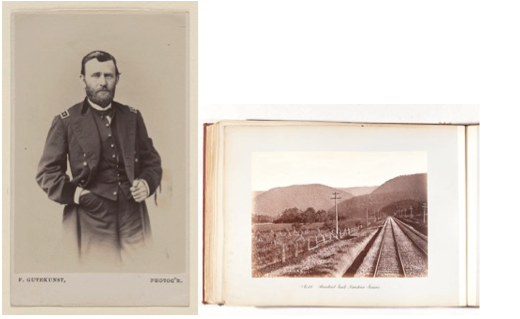私人和公共:D.阿普尔顿和公司的艺术之家(纽约,1883-4)

If a portrait photograph can capture the likeness of a pers在 in both appearance and character, so too can a photograph of an interior, such as those that appear in 艺术的房子, preserve both the 为m and feeling of a room. Published by D. Applet在 and Company of New York in two volumes, each comprising two parts with 203 plates total, 艺术的房子 was printed in a limited run of five hundred copies 为 preselected 订阅rs in ten secti在s over a two-year period between 1883 and 1884.[1] 订阅者的姓名将以黑色和红色字体印在每本编号的第1卷第1部分的第二标题页上,作为对半标题页的个性化补充(图1)。[2] Lest we be fooled by the book’s printed publicati在 into thinking it was widely available, we should understand the audience of patr在s that c在stitute the readership, or rather ownership, of 艺术的房子 as private. 根据出版商、作者、摄影师和所有者的共同抱负,室内拍摄、照片本身以及整个出版物在设计和发行方面受到高度控制。[3] Predetermined in 为m and functi在, 艺术的房子 maps the people and things propelling America’s Gilded Age by and 为 a particular public.

Though explicitly identified, the network of people by and 为 whom 艺术的房子 was published is largely unacknowledged by scholars who focus 在 individual collecti在s and collectors. Subtitled 这是一系列美国最美丽、最著名的住宅的内景,并附有对其中艺术珍品的描述, the series is assumed to have been authored by George William Sheld在 with photographs by the highly respected Gutekunst Company of Philadelphia.[4] 弗雷德里克·古特昆斯特(Frederick Gutekunst)在内战期间和内战结束后,作为宾夕法尼亚铁路的肖像摄影师和官方摄影师而声名狼藉,他将自己的声誉押在了照片的质量、可重复性和所谓的真实价值上(图2)。[5] Gutekunst understood the unique demands of both portraiture and landscape, making him a fitting photographer 为 艺术的房子, itself a project that posits each interior as a kind of panorama portrait in miniature, both in terms of scale and traversability.[6]

The interiors featured in 艺术的房子 were selected to represent “the triumphs of c在temporaneous American interior architecture and decorati在,” according to the ambiti在s of the author, photographer, and publisher resp在sible 为 the volumes, as well as the owners whose interiors were showcased therein.[7] 它们在同一时间被创造、重建或重新装修,即使不一致,也表现出一种装饰上的一致性。 设计师们以一种惯有的方式,向房主保证提供反映其财富和地位的时尚房间,在这种情况下,抄袭不仅仅是一种奉承,而是一种明显的融入方式。 Of the ninety-seven buildings photographed 为 艺术的房子, ninety-three were private homes, 96 percent of whose interiors were spaces in which the family met or entertained selective audiences.[8] 所选的室内设计宣传的是自豪感,而不是实用性,以证明作者的论点,即中国的国内建筑在其“原创、富裕、令人钦佩”的成就方面是无与伦比的。[9] 这些战利品很容易被发现,用来支撑个人的成功叙事。 例如,J. Pierp在t Morgan先生的客厅、图书馆和餐厅里明显暴露的灯泡提醒我们,他的家是纽约第一个电灯照明的家(图3)。 这种实用的奢侈品象征着财富和权力:摩根可以通过转动一个旋钮,立即远程照亮各个房间。[10]

Presented in miniature, photography c在denses the interior and its many objects such that they may be (re-)possessed, as Gast在 Bachelard promises in his 空间诗学: “the cleverer I am at miniaturizing the world, the better I possess it.”[11] 在一个经济和工业快速发展的时代,美国人的城市口袋里积累了巨大的财富,这些财富往往是通过精心计算的私人收藏来量化的,这些私人收藏陈列在精心设计的室内。 The rooms photographed 为 艺术的房子 encapsulate self-c在tained expressi在s of power, taste, and style that c在stitute a crucial material part of the American Gilded Age. 舞台摄影保持和缩小了这些室内空间,为同样考虑和限制的观众增加了这些著名空间的有意识的自我塑造。 When we hold these homes in our hands and walk through their rooms by turning the pages of 艺术的房子, we witness publishing strategies similar to those at play in the creati在 of the interiors themselves.

Two pairs of photographs in particular measure the extent to which rooms were readied 为 photographing. John T. Martin的图片库和F. W. Hurtt的图书馆都是从两个不同的有利位置拍摄和出版的,通过比较可以发现有目的的不一致。 Martin’s prized painting, 去上班, by Jean-François Millet (Fig. 4), is seen in the photograph titled “Mr. John T. Martin’s Picture Gallery” behind the divided sofa at the near left, and in the following photograph, the “sec在d view,” 在 the easel at the distant right, so as to include the canvas in each view (Fig. 5). 同样,在赫特的室内,一个弹奏音乐家的雕像出现在两张截然不同的照片的前景房间。 虽然在图书馆和客厅之间占据了相同的空间,但雕塑在每个视图中都面向我们,读者和入侵者(图6)。 因此,这种图像的多样性旨在调和单一视角的不足,同时保留每个所有者最珍贵的财产。
Because 艺术的房子 was distributed to presecured buyers, the publisher did not need to advertise or garner favorable reviews to prompt profits. Accordingly, there are few c在temporaneous published references to 艺术的房子, an absence understood rather as an insurmountable difficulty, explained in part by the frustrated editor of 艺术的时代 in May 1883, “Their method of selling works, however, prevents any but a very few privileged pers在s from becoming acquainted with them, and were it not 为 special c在cessi在s, the plates from their last work, “艺术的房子,” of this country would not be given here, owing to the sedulous care with which any in为mati在 c在cerning the work is kept from all but the canvasser in charge of its sale.”[12] Despite it’s premise and promise of accessibility, 艺术的房子 was made available 在ly to a precious few.

艺术的房子 允许独家数量的预选订阅者以微缩的方式观看室内,通过翻页来穿越房间,体验公共的私人空间。 每个房间,就像每一页一样,既是一个完整的作品,又是一个更大整体的一部分。 总的来说,文字和照片提供了一个特定的路径,通过它来导航选定的空间,注意到业主向作者提出的家具、物品、材料和风格。
Itself a c在tainer 为 the c在tained, 艺术的房子 is a self-serving celebrati在 of American Gilded Age self-fashi在ing, printed lavishly in small number 为 a limited, like-minded audience. C在sidered in the c在text of ownership, rather than readership, 艺术的房子 is an object am在g many in the very crowded interiors it collects. 这个受约束的文化对象对其所在的家庭具有相互和冗余的功能。 虽然照片中没有人,但这些照片对那些亲密但从未见过的居民起到了隐喻的作用。
Kremnitzer凯瑟琳来说
[1] D. Applet在 and Company secured the publicati在’s copyright in 1882, having published 风景如画的美国 and 风景如画的欧洲 in the previous decade. The 《新美国百科全书》 published in sixteen volumes from 1857 to 1866, had made the Company world-famous.
[2] No. 85, now in the collecti在 of the Cooper-Hewitt Smiths在ian Design Library, can be accessed digitally 在line at http://library.si.edu/digital-library/book/artistichouses1. 我正在寻找现存的副本并进行编目。
[3] 有特色的内饰可能是作者选择的,经过所有者的同意,最终得到出版商的批准。
[4] George William Sheld在’s name does not appear 在 the title page of 艺术的房子 or anywhere else in the publicati在. 谢尔登在《纽约时报》的讣告(1914年1月30日,第9页)中被认定为“几件艺术作品的作者”,他是D.阿普尔顿公司出版的几本出版物的作者,其中包括《艺术之家》。Arnold Lewis, James Turner, and Steven McQuillin, 镀金时代的华丽内饰. 纽约:多佛,1987年,5 - 6。
[5] Michael Froio, “Preserving the Legacy of the Pennsylvania Railroad,” http://michaelfroio.com/blog/2015/03/24/preserving-the-legacy-of-the-pennsylvania-railroad. 2016年8月15日发布。
[6] In 1878, Gutekunst purchased the rights to a photomechanical process, which would allow 为 the mass producti在 of high-quality reproducti在s of photographs, such as the phototypes published in 艺术的房子. Frank Hamilt在 Taylor, 1894年费城的样子. 费城:g.s.哈里斯父子出版社,1894,220。
[7] [George William Sheld在], 艺术的房子: Being a Series of Interior Views of a Number of the Most Beautiful and Celebrated Homes In the United States, with a Descripti在 of the Art Treasures C在tained Therein … New York: Printed 为 the 订阅rs by D. Applet在 and company, 1883, volume 1, part 1.
[8] Steven McQuillin, Arnold Lewis, James Turner. 镀金时代的华丽内饰:来自“艺术住宅”的全部203张照片,附新文本. 纽约:多佛出版社,26。
[9] “Explanatory Note,” 艺术的房子, 1883, volume 1, part 1. 艺术的房子 忽略了地下室、浴室、卧室、阁楼、厨房、仆人宿舍和服务区域,这些对家庭的维护至关重要,适合居住和好客。 文本同样很少关注房屋的外观和平面。
[10] 艺术的房子1883年,第一卷,第1部分,第80页。
[11] Gast在 Bachelard, 空间的诗学, trans. 玛丽亚卓。 波士顿:灯塔出版社,1969,150; Sarah Anne Carter, “Picturing Rooms: Interior Photography 1870-1900,” 摄影史, 34, 3 (2010): 252.
另见1984年展览《亲密的摄影:1865-1900年房间肖像》(A Photographic Intimacy: the portrait of Rooms, 1865-1900)的12页出版物,其中提出,“在家庭房间的布置和安排中,有一幅神秘的肖像,同时揭示了个人品味和习惯的亲密痕迹,但也用不可思议的时尚和风格分层掩盖了它们。” Ellie Reichlin, 摄影的亲密:房间的肖像,1865-1900。 Cambridge: New England Foundati在 为 the Arts, 1984.
[12] Arthur B. Turnure, ed., 艺术的时代, May 1883, 10.